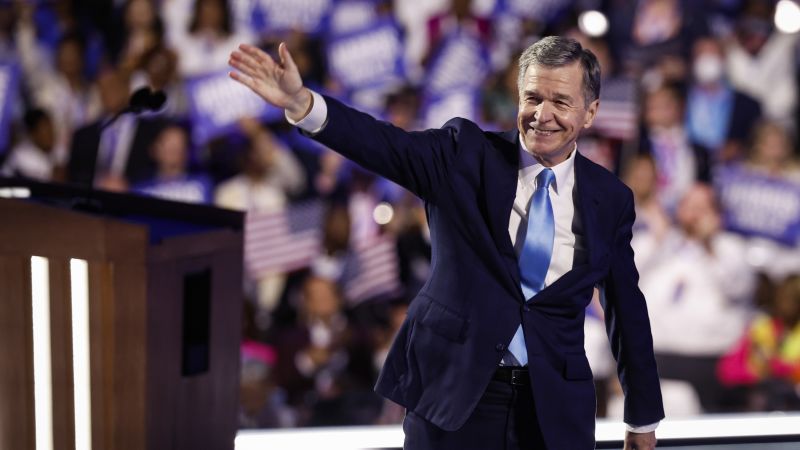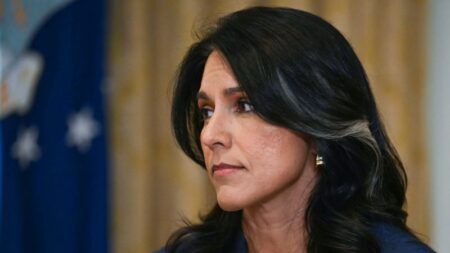The United States political landscape is gearing up for the 2026 midterm elections, with crucial Senate races on the horizon. Among the most significant developments is the announcement from former North Carolina Governor Roy Cooper, who declared his candidacy for the Senate seat vacated by retiring Republican Senator Thom Tillis. This decision is a massive boost for Democrats as they seek to flip several Republican-held seats in their bid to reclaim a Senate majority, which seems increasingly plausible as the election cycle progresses.
Democrats are eyeing a series of key races, particularly as they navigate a complex political landscape influenced by the unpredictable popularity of former President Donald Trump. As the Democrats strategize, they are focused on several battleground states including Maine, Iowa, and Texas, where they hope to mount competitive campaigns against entrenched Republican incumbents. Notably, while defending seats in states like Georgia, where Senator Jon Ossoff is seeking reelection, the party is also facing retirements in crucial states like Michigan, Minnesota, and New Hampshire.
In New Hampshire, the Democratic landscape is heating up with Rep. Chris Pappas vying for the Senate seat, especially after former Republican Governor Chris Sununu opted out of the race. Meanwhile, Georgia’s situation appears to favor Ossoff, especially with popular Governor Brian Kemp declining to enter the Senate race. Maine Democrats are eager for Governor Janet Mills to challenge long-serving Republican Senator Susan Collins, hoping to capitalize on any potential vulnerability.
However, internal dynamics within the Democratic Party present challenges. They are currently navigating various conflicts, aiming to avoid prolonged primaries that could weaken their chances in the general elections. Senate Minority Leader Chuck Schumer and his campaign chief, Senator Kirsten Gillibrand, expressed confidence in Cooper’s campaign, stating it reflects the risks facing the Republican Senate majority in 2026.
Turning to Michigan, Democrats are particularly concerned about the upcoming open Senate race, primarily due to the potential candidacy of former Representative Mike Rogers, a lost nominee in the 2024 Senate race. His campaign has gained momentum following other Republicans’ decisions to forgo a run. Supporters assert that Rogers will be better positioned now, lacking major opposition and with early fundraising proving more favorable compared to past endeavors.
On the Democratic side in Michigan, the primary is heating up with notable contenders, including Representative Haley Stevens and progressive former gubernatorial candidate Abdul El-Sayed, alongside State Senator Mallory McMorrow. Interestingly, Stevens has earned well-regarded endorsements, positioning her as a formidable candidate for the general election. Meanwhile, a spokesperson indicated that Democrats are optimistic about defending the Michigan seat, citing a 30-year Republican Senate drought in the state.
Furthermore, Democrats have been taken aback by El-Sayed’s strong fundraising efforts, energetically backed by Senator Bernie Sanders, who advocates for a more assertive stance against Trump. As the Michigan primaries approach, the party’s unity is essential, but discord may arise due to interpersonal conflicts among influential party figures, complicating their election strategy. Add to this the potential impact of the Michigan gubernatorial race and the candidacy of independent Mike Duggan, bringing additional worry about split votes potentially affecting Senate and House outcomes.
In the Republican camp, tensions are rising within Texas where Senator John Cornyn faces a challenge from conservative attorney general Ken Paxton. The internal struggle highlights deeper tensions within the party, particularly influenced by personal fallout in Paxton’s life that could shift voter sentiments. Democrats see an opening if Paxton secures the nomination, albeit they too are grappling with their own primary as various candidates, including former Representative Colin Allred and Beto O’Rourke, contemplate Senate bids.
Ohio and Iowa also emerge as critical battlegrounds for Democrats. Hope for capturing Ohio’s seat rests on the potential return of former Senator Sherrod Brown after a tough 2024 reelection loss. Meanwhile, Iowa’s landscape is unpredictable with speculation around Senator Joni Ernst’s political future amid criticisms over her dismissive remarks regarding health care funding. The Republican bench remains robust, with candidates like Representative Ashley Hinson poised as likely successors should Ernst decide to retire.
In Alaska, Democrats remain optimistic about creating competition in the Senate race against Republican Senator Dan Sullivan, closely watching former Representative Mary Peltola’s potential candidacy. Her previous loss to a Republican candidate does not deter hopes within the party of making a meaningful impact in that race.
As midterm elections draw closer, the dynamics in various states hint at a shift in political tides, fueled by candidate announcements, primary battles, and ongoing conflicts within party ranks. Each state presents a unique challenge and opportunity for both parties, underscoring the complex nature of American politics as the nation gears up for another consequential election cycle.











